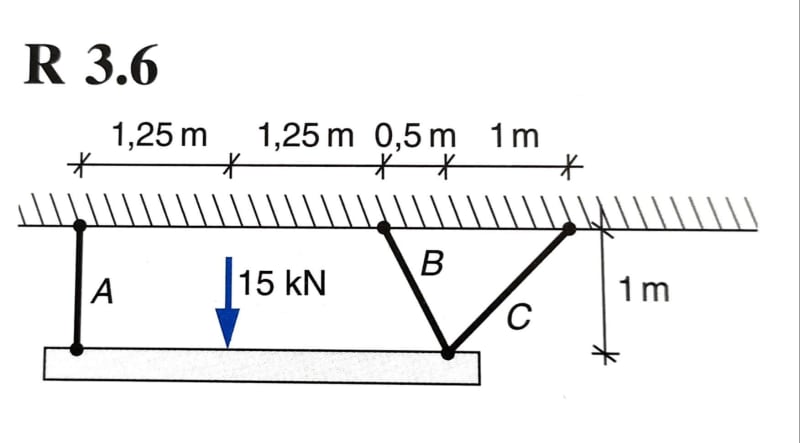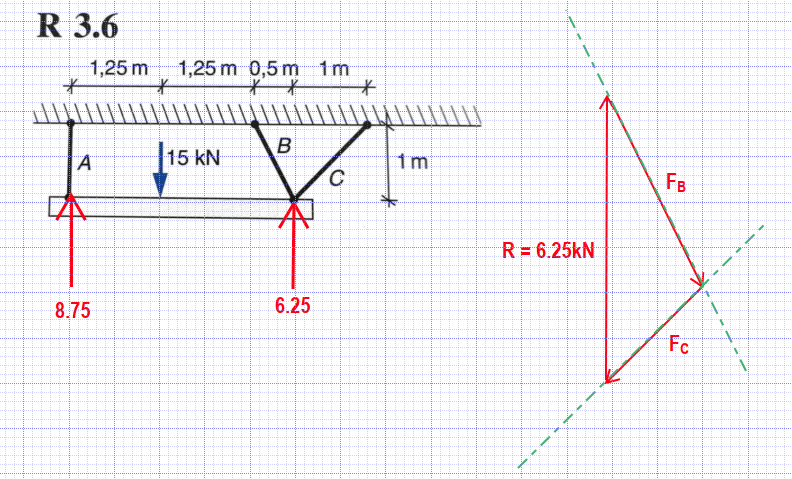David_G_
Automotive
- Jul 5, 2021
- 4
Hi all,
I'm trying to refresh my knowledge from my BSc mechanical engineering degree 4 years ago and this specific structural frame problem has me stuck. There must be some basic line of thinking I've forgot.

Task: Find forces in A, B and C.
I start by making a free body diagram, and split B and C forces in their X and Y components.
I find force A by calculating the net moment on intersection between B and C: Force A = 8,75kN.
Net force in Y-direction gives Fby+Fcy= 6,25kN.
Net force in X-direction gives Fbx = Fcx
From here on I'm stuck...
(Final answers are: FA=6,25kN 8,75kN, FB=4,66kN, FC=2,95kN)
Edit: FA=6,25kN 8,75kN
Edit2: Solution found. The basic line of thinking I forgot to use was trigonometric substitution in the equilibrium equations..
I'm trying to refresh my knowledge from my BSc mechanical engineering degree 4 years ago and this specific structural frame problem has me stuck. There must be some basic line of thinking I've forgot.

Task: Find forces in A, B and C.
I start by making a free body diagram, and split B and C forces in their X and Y components.
I find force A by calculating the net moment on intersection between B and C: Force A = 8,75kN.
Net force in Y-direction gives Fby+Fcy= 6,25kN.
Net force in X-direction gives Fbx = Fcx
From here on I'm stuck...
(Final answers are: FA=
Edit: FA=
Edit2: Solution found. The basic line of thinking I forgot to use was trigonometric substitution in the equilibrium equations..


![[smile] [smile] [smile]](/data/assets/smilies/smile.gif) ).
).